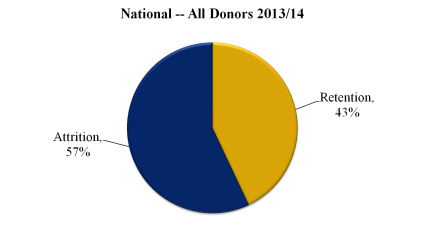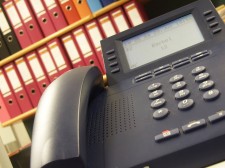Every charity wants more money from donors. If only existing donors would write larger checks, become monthly supporters, make a major gift, and/or commit to a planned gift, there would be less pressure on the fundraising staff and the organization would be able to do more to fulfill its mission.
But, how can you raise more from your donors if they do not stick around?
Nationally, the median nonprofit organization finds that its donor retention rate is just 43 percent! Among first-time donors, the retention rate is an obscenely low 23 percent! (The stats come from the AFP Fundraising Effectiveness Project.)
 The good news is that if you can increase your nonprofit organization’s donor retention rate by just ten percentage points, you could see an increase of up to 200 percent in donor lifetime value, according to researcher Dr. Adrian Sargeant. In other words, if you retain more donors, they will increase their giving and some will even encourage others to support your organization as well.
The good news is that if you can increase your nonprofit organization’s donor retention rate by just ten percentage points, you could see an increase of up to 200 percent in donor lifetime value, according to researcher Dr. Adrian Sargeant. In other words, if you retain more donors, they will increase their giving and some will even encourage others to support your organization as well.
Unfortunately, increasing your donor retention rate won’t happen all by itself. You need to make it happen. So, what is the simplest, most effective tactic for accomplishing this?
 Do you see that shiny box on your desk? It’s probably black with some flashing lights, and it’s plugged into the wall. It’s a telephone. Pick it up and call your donors to thank them for their support. While you’re at it, find out why they support your organization.
Do you see that shiny box on your desk? It’s probably black with some flashing lights, and it’s plugged into the wall. It’s a telephone. Pick it up and call your donors to thank them for their support. While you’re at it, find out why they support your organization.
Yes, it really is that simple. CALL YOUR DONORS!
Multiple research studies have proven that thank-you calls are a powerful donor retention tactic. For example, Penelope Burk, in her book Donor Centered Fundraising, reports:
• 95 percent of study donors stated they would appreciate a thank-you call within a day or two of the organization receiving their donation.
• 85 percent said such a thank-you call would influence them to give again.
• 84 percent said they would definitely or probably give a larger gift.
Burk went on to report, when donors were tracked after 14 months, the group that received a thank-you call gave 42 percent more on average compared to similar donors who did not receive a thank-you call. During the renewal cycle, those who received a thank-you call were 39 percent more likely to renew their support.
Here are some tips to make your thank-you calls effective:
• Have the highest-ranking person(s) possible make the calls. If you can get your board members to call donors, particularly upper-level donors, so much the better.
• Look at how many of your donors you have the staff and volunteer leadership resources to call. Then, look at how many new and renewing donors your organization secures each month. Working from the largest donors to the smallest, determine which donors you will call or arrange to have called based on the amount of resources that can be devoted to the effort. Ideally, you will at least call all donors of $250 or more. If budget resources permit, include all other donors in a periodic thank-you phone program staffed by volunteers or paid callers.
• Call donors within three days of receiving a donation. After two attempts on different days at different times, you can leave a voice-mail message thanking the donor.
• When contacting a donor, let her know you received her gift, thank her for her donation and for caring, briefly let her know how her contribution will be used, find out what part of your organization’s mission or which program(s) inspires her to support your organization, and gather additional information such as email address. Have talking points, not a script. Keep it brief. Listen more than you speak.
• Record all relevant information so it can be used later. For example, if you work for an animal welfare agency, a donor might tell you he supports your organization because it rescues pit bulls. In that case, do not send this donor a report or appeal based on your cat-spaying program. Instead, future communications should focus on pit bulls, while you might briefly reference your agency’s other efforts.
• Provide your donor with a name and phone number she can contact with any questions or comments in the future.
Not all fundraising ideas are simple. Fortunately, enhancing your donor retention rate and raising significantly more money is easy. All you have to do is pick up the telephone and call your donors. If you do that, you’ll stand out, in a good way, from virtually all the other organizations your donors are supporting.
Calling donors helps to engage them. Engaging donors builds relationships. Building relationships with donors leads to higher retention rates and greater likelihood of upgraded giving.
Okay, now that you’ve read my post, go call a donor.
Seriously. I encourage you, implore you, plead with you, beg you, beseech you to call your donors. Make that human-to-human contact. If you already call some donors to thank them, call more. If you’re already calling all of your donors, congratulations! Let me know how you’re doing it and the impact you’re having.
So, are you willing to commit to calling more of your donors to thank them? If so, please let me know in the comments section below. If you don’t, you’re just going to make me sad.
That’s what Michael Rosen says… What do you say?








